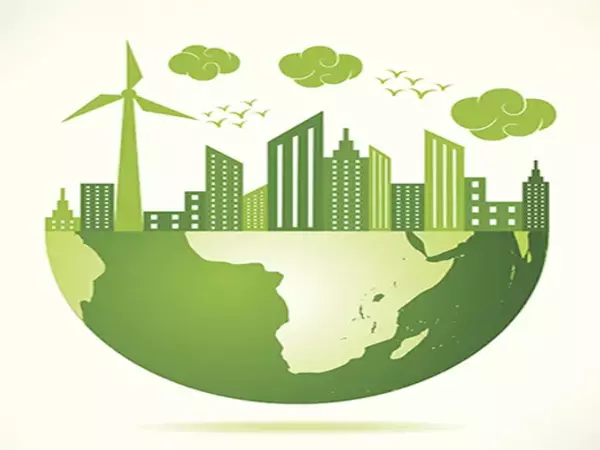Renewable energies account for an increasing proportion of total energy consumption and are critical in combating climate change. Continue reading to learn about renewable energy’s overall carbon footprint, its carbon footprint throughout its life cycle, and its environmental impact.
Carbon dioxide emissions have risen dramatically since the beginning of the industrial revolution, owing primarily to the combustion of fossil fuels. The majority of the world’s greenhouse gas emissions are emitted by a small number of countries. On an absolute basis, China, the United States, and the countries that comprise the European Union are the three largest emitters. The United States and Russia have the highest per capita greenhouse gas emissions.
The bad news first: nothing is free. Moving the world energy system away from fossil fuels and toward renewable sources will generate carbon emissions in and of itself, because the construction of wind turbines, solar panels, and other new infrastructure consumes energy, some of which must necessarily come from the fossil fuels we are attempting to eliminate. The good news is that if this infrastructure can be put in place quickly, emissions will be drastically reduced because far more renewable energy will be used early on, requiring far less fossil fuel to power the transition.
This is the conclusion of a study that for the first time estimates the cost of a green transition not in dollars, but in greenhouse gases. The study appears this week in the Proceedings of the National Academy of Sciences.
The message is that it is going to take energy to rebuild the global energy system, and we need to account for that. Any way you do it, it’s not negligible. But the more you can initially bring on renewables, the more you can power the transition with renewables.
Corey Lesk
“The message is that it is going to take energy to rebuild the global energy system, and we need to account for that,” said lead author Corey Lesk, who did the research as a Ph.D. student at the Columbia Climate School’s Lamont-Doherty Earth Observatory. “Any way you do it, it’s not negligible. But the more you can initially bring on renewables, the more you can power the transition with renewables.”
The researchers calculated the potential emissions from mining, manufacturing, transportation, construction, and other activities required to build massive solar panel and wind turbine farms, as well as more limited infrastructure for geothermal and other energy sources. Previous research estimated the cost of new energy infrastructure in dollars—$3.5 trillion per year until 2050 to achieve net-zero emissions, according to one study, or up to $14 trillion for the United States alone during the same time period, according to another. The new study appears to be the first to estimate the cost in terms of greenhouse gas emissions.
On the current slow pace of renewable infrastructure production (predicted to lead to 2.7 degrees C warming by the end of the century), the researchers estimate these activities will produce 185 billion tons of carbon dioxide by 2100. This alone is equivalent to five or six years of current global emissions—a hefty added burden on the atmosphere. However, if the world builds the same infrastructure fast enough to limit warming to 2 degrees—current international agreement aims to come in under this—those emissions would be halved to 95 billion tons. And, if a truly ambitious path were followed, limiting warming to 1.5 degrees, the cost would be only 20 billion tons by 2100—just six months or so of current global emissions.

The researchers point out that all their estimates are probably quite low. For one, they do not account for materials and construction needed for new electric-transmission lines, nor batteries for storage—both highly energy- and resource-intensive products. Nor do they include the cost of replacing gas- and diesel- powered vehicles with electric ones, or making existing buildings more energy efficient. The study also looks only at carbon-dioxide emissions, which currently cause about 60 percent of ongoing warming—not other greenhouse gases including methane and nitrous oxide.
Other effects of the transition to renewables are difficult to quantify, but they could be significant. All of this new high-tech hardware will necessitate not only massive amounts of base metals like copper, iron, and nickel, but also previously underutilized rare elements like lithium, cobalt, yttrium, and neodymium. Many commodities would almost certainly have to come from previously unexplored areas with fragile environments, such as the deep sea, African rain forests, and rapidly melting Greenland. Solar panels and wind turbines would consume large areas of land directly, potentially affecting ecosystems and people who live there.
“We’re laying out the bottom bound,” said Lesk of the study’s estimates. “The upper bound could be much higher.” But, he says, “the result is encouraging.” Lesk said that given recent price drops for renewable technologies, 80 to 90 percent of what the world needs could be installed in the next few decades, especially if current subsidies for fossil-fuel production are diverted to renewables. “If we get on a more ambitious path, this whole problem goes away. It’s only bad news if we don’t start investing in the next 5 to 10 years.”
Lesk and his colleagues looked at carbon emissions from sea-level rise adaptation as part of the study, and discovered that building sea walls and moving cities inland where necessary would generate 1 billion tons of CO2 by 2100 under the 2-degree scenario. Again, this is only a portion of the cost of adaptation; they did not consider infrastructure to control inland flooding, irrigation in areas that may become drier, building adaptation to higher temperatures, or other necessary projects.
“Despite these limitations,” the authors write, “we conclude that the magnitude of CO2 emissions embedded in the broader climate transition is of geophysical and policy relevance.” “Faster decarbonization can significantly reduce transition emissions, giving new urgency to policy progress on rapid renewable energy deployment.”





